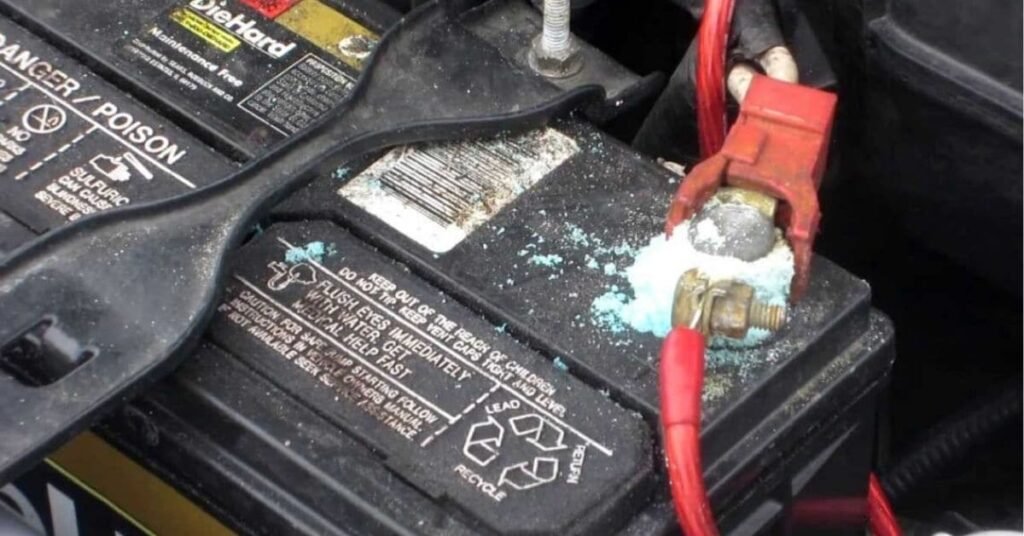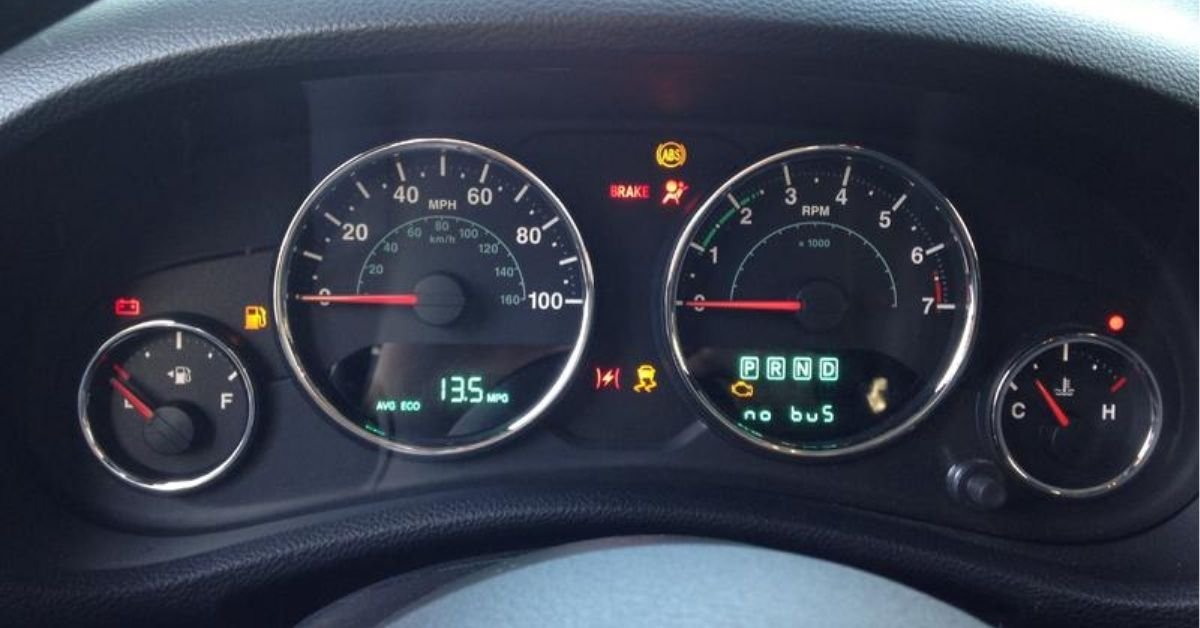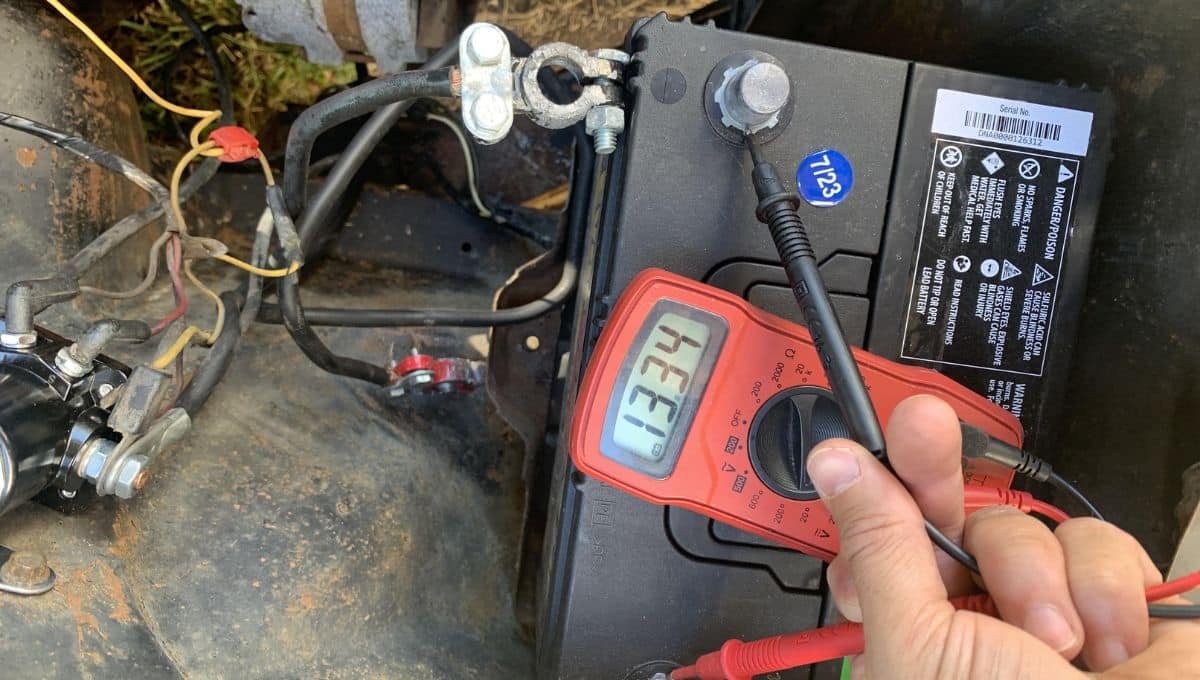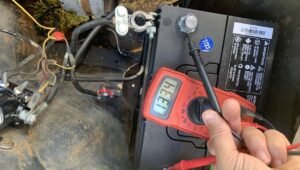Can a Bad Battery Cause No Bus Code – Discover the Answer!
A weak battery can indeed trigger a No Bus code by disrupting communication between a vehicle’s control modules. When a battery fails to deliver consistent power, it causes voltage drops that affect the CAN Bus system.
Replacing the faulty battery often resolves the issue, as it restores proper communication and clears the No Bus error.
Introduction:
When your car’s dashboard flashes cryptic error messages, it can be a cause for concern. Among these, the “No Bus” code is particularly puzzling.
This warning indicates a communication failure within the vehicle’s electronic system, which often leaves drivers scrambling for answers. One potential cause that many may not consider is a failing battery.
Surprisingly, a bad battery can indeed contribute to the appearance of a No Bus code. Understanding how your vehicle’s battery interacts with its communication systems is key to resolving this issue.
Understanding the No Bus Code:

What Does No Bus Mean in a Vehicle Context?
The term “No Bus” refers to a breakdown in communication between your vehicle’s control modules. In modern cars, various electronic components rely on an internal communication network known as the Controller Area Network (CAN) Bus.
This system allows different modules—such as the engine control unit (ECU), transmission control module, and others—to communicate with each other.
When the CAN Bus fails to transmit signals properly, the “No Bus” message appears on your dashboard, alerting you that something is amiss.
The Role of the CAN Bus System in Modern Vehicles:
The CAN Bus system acts as the nervous system of your vehicle. It transmits data between critical components, ensuring smooth operation and coordination. For example, the ECU needs data from the sensors in order to adjust fuel injection, ignition timing, and other critical functions.
Without proper CAN Bus communication, these essential functions are disrupted, which can result in performance issues or even a complete breakdown. The No Bus code essentially means that there’s a communication blackout between these components.
Common Causes of the No Bus Code: Electrical, Wiring, and Beyond
While the No Bus code can indicate a range of issues, the most common causes include electrical malfunctions, faulty wiring, and problems with the ECU itself.
Damaged or corroded wiring can prevent signals from passing through, while a malfunctioning ECU might not be able to send or receive information properly.
Additionally, a weak or dying battery can cause voltage drops that interfere with the CAN Bus system’s ability to maintain stable communication between modules.
read also: Can a bad RV converter drain the battery – Check the Converter!
The Connection Between a Bad Battery and the No Bus Code:
Can a Dying Battery Disrupt the CAN Bus Communication?
Yes, a bad battery can disrupt CAN Bus communication. The system requires a consistent and sufficient power supply to function properly. When the battery is weak or near failure, it may not be able to deliver the voltage necessary for the CAN Bus to transmit data reliably.
This lack of power can result in intermittent communication failures between the control modules, causing the No Bus code to appear.
How Low Voltage Can Affect Communication Between Modules:
Low voltage creates instability within the vehicle’s electrical system. Control modules are designed to operate within a specific voltage range.
When the battery fails to provide the necessary voltage, these modules may not receive the power they need to operate, leading to communication breakdowns.
This instability can result in a variety of issues, from engine misfires to warning lights, and in many cases, the dreaded No Bus error code.
Real-World Scenarios: How a Bad Battery Can Trigger the No Bus Code
Imagine a scenario where a car intermittently fails to start, and the dashboard lights flicker erratically. The driver might notice the No Bus code displayed during these instances.
In this case, a weak battery that struggles to maintain voltage when the car is running could be the cause. The moment the battery dips below the required voltage, the CAN Bus system falters, and the control modules stop communicating, triggering the error.
Symptoms of a Bad Battery Causing the No Bus Code:

Dashboard Warning Lights and Error Messages:
A common symptom of a failing battery is the sudden illumination of various warning lights, including the No Bus code. When these lights appear in conjunction with each other, it’s often a sign of a deeper electrical issue.
The battery may be failing to supply consistent voltage, causing sensors and control modules to send faulty signals or none at all.
Difficulty Starting the Vehicle: Could It Be the Battery?
A slow or hesitant start is another indication of a battery on its last legs. If your vehicle cranks slowly or fails to start at all, the battery may not be delivering enough power to the starter motor and control modules.
This problem can also result in the No Bus code being triggered, as insufficient voltage affects the entire electrical network.
Intermittent Power Issues: Flickering Lights and System Failures
Flickering dashboard lights, malfunctioning radio, or sudden system failures like power windows and air conditioning cutting out are often signs of a dying battery.
These intermittent power issues can disrupt CAN Bus communication, leading to the No Bus code. When power fluctuates, the control modules experience interruptions in communication, which may result in temporary system malfunctions.
read also: Can a Bad Battery Cause Stuttering – Find Out Why!
Diagnosing the No Bus Code: Is the Battery the Culprit?
How to Check Your Battery’s Health and Voltage Levels:
The first step in diagnosing a No Bus code is to test the health of the battery. This can be done with a multimeter, which will measure the battery’s voltage.
A healthy battery should read around 12.6 volts when the vehicle is off and above 13.7 volts when the engine is running. If the battery voltage is consistently lower than these levels, it may be the cause of the No Bus code.
Other Potential Causes of the No Bus Code (Wiring, ECU, etc.):
While a bad battery is a common cause, it’s essential to rule out other issues such as faulty wiring or a malfunctioning ECU. Corroded or loose wiring can also disrupt CAN Bus communication.
Likewise, if the ECU fails to function properly, it may not be able to send or receive data, triggering the No Bus code. Diagnosing these components requires a more in-depth electrical inspection by a professional.
Why a Comprehensive Diagnostic Is Essential for Correct Identification:
Due to the complex nature of modern vehicle electronics, a comprehensive diagnostic scan is crucial for identifying the root cause of the No Bus code.
A mechanic can use advanced diagnostic tools to pinpoint the exact issue, whether it’s the battery, wiring, or ECU. This saves time and money by avoiding unnecessary part replacements.
Fixing the No Bus Code: Battery Replacement and Other Solutions

When and How to Replace a Bad Battery:
If your battery is identified as the cause of the No Bus code, replacing it is the most straightforward solution. It’s important to choose a battery that meets your vehicle’s specifications, as the wrong battery can lead to further complications.
Once replaced, the battery will ensure a stable power supply, which should restore proper communication between the control modules.
Inspecting and Repairing Electrical Connections and Grounds:
In addition to replacing the battery, it’s wise to inspect and repair any damaged or corroded electrical connections. A poor ground connection can mimic the symptoms of a bad battery by preventing proper current flow.
Cleaning the battery terminals and ensuring tight connections can also prevent future electrical issues.
Resetting the System After Fixing the Underlying Issue:
Once the battery or other electrical components are replaced, the vehicle’s system may need to be reset to clear the No Bus code. This can usually be done by disconnecting the battery for a few minutes or using a diagnostic tool to clear the error. Afterward, test the car to ensure that the communication issues have been resolved.
read also: Do Mercedes Batteries Have to be Coded – Must Know Facts!
Preventing Future No Bus Code Errors:
Importance of Regular Battery Maintenance:
Regular battery maintenance can help prevent issues like the No Bus code from recurring. Keep the terminals clean and free of corrosion, and test the battery’s health periodically. Replacing the battery before it fails completely can save you from unexpected problems down the road.
How to Monitor and Maintain the CAN Bus System:
Beyond the battery, it’s important to keep an eye on the health of your vehicle’s CAN Bus system. Regular vehicle inspections that include checking wiring and control modules can prevent communication issues. Early detection of any problems within the system can prevent the No Bus code from being triggered.
Proactive Measures to Avoid Electrical Issues in Your Vehicle:
Taking a proactive approach to vehicle maintenance can save you from unexpected electrical problems. Ensuring that your vehicle’s battery and electrical system are in good condition will help avoid common issues like the No Bus code. Regular diagnostics, battery checks, and inspections of the CAN Bus system will keep your car running smoothly.
FAQ’s
1. Can a bad battery cause the No Bus code?
Yes, a weak or failing battery can disrupt communication between control modules, leading to the No Bus code.
2. What does the No Bus code mean?
It means there is a communication failure within the vehicle’s CAN Bus system.
3. How can I test if my battery is causing the No Bus code?
Use a multimeter to check the voltage. Low voltage readings indicate the battery might be at fault.
4. Can faulty wiring cause the No Bus code?
Yes, corroded or loose wiring can also disrupt CAN Bus communication and trigger the code.
5. Will replacing the battery fix the No Bus code?
If the battery is the root cause, replacing it will likely fix the No Bus code.
Conclusion:
A bad battery can cause the No Bus code by disrupting communication between key vehicle modules. Regular maintenance and timely battery replacements can help prevent this issue. Keeping your vehicle’s electrical system in good health ensures smooth operation and reduces the likelihood of encountering frustrating errors like the No Bus code.
Read Also:
Does Accessory Mode Drain Car Battery – Tips to Avoid a Dead Batter
Will a Car Alternator Charge a Deep Cycle Battery – Find Out!
Car Batteries That Will Keep Me on the Road – The Power of Efficiency!
Can I Use a Car Battery in My Travel Trailer – Find Out!














Post Comment